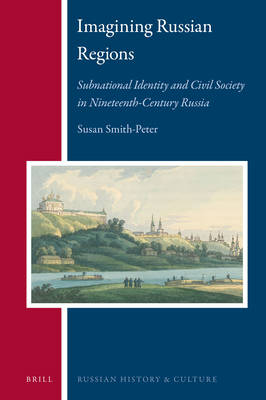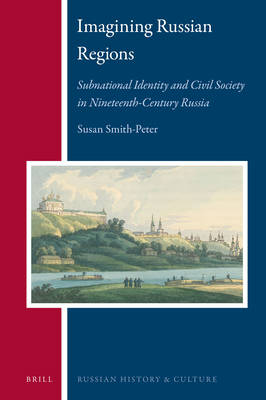
- Afhalen na 1 uur in een winkel met voorraad
- Gratis thuislevering in België vanaf € 30
- Ruim aanbod met 7 miljoen producten
- Afhalen na 1 uur in een winkel met voorraad
- Gratis thuislevering in België vanaf € 30
- Ruim aanbod met 7 miljoen producten
Zoeken
Imagining Russian Regions
Subnational Identity and Civil Society in Nineteenth-Century Russia
Susan Smith-Peter
€ 224,45
+ 448 punten
Omschrijving
In Imagining Russian Regions: Subnational Identity and Civil Society in Nineteenth-Century Russia, Susan Smith-Peter shows how ideas of civil society encouraged the growth of subnational identity in Russia before 1861. Adam Smith and G.W.F. Hegel's ideas of civil society influenced Russians and the resulting plans to stimulate the growth of civil society also formed subnational identities.
It challenges the view of the provinces as empty space held by Nikolai Gogol, who rejected the new non-noble provincial identity and welcomed a noble-only district identity. By 1861, these non-noble and noble publics would come together to form a multi-estate provincial civil society whose promise was not fulfilled due to the decision of the government to keep the peasant estate institutionally separate.
It challenges the view of the provinces as empty space held by Nikolai Gogol, who rejected the new non-noble provincial identity and welcomed a noble-only district identity. By 1861, these non-noble and noble publics would come together to form a multi-estate provincial civil society whose promise was not fulfilled due to the decision of the government to keep the peasant estate institutionally separate.
Specificaties
Betrokkenen
- Auteur(s):
- Uitgeverij:
Inhoud
- Aantal bladzijden:
- 344
- Taal:
- Engels
- Reeks:
- Reeksnummer:
- nr. 19
Eigenschappen
- Productcode (EAN):
- 9789004353497
- Verschijningsdatum:
- 12/10/2017
- Uitvoering:
- Hardcover
- Formaat:
- Genaaid
- Afmetingen:
- 157 mm x 236 mm
- Gewicht:
- 975 g

Alleen bij Standaard Boekhandel
+ 448 punten op je klantenkaart van Standaard Boekhandel
Beoordelingen
We publiceren alleen reviews die voldoen aan de voorwaarden voor reviews. Bekijk onze voorwaarden voor reviews.











